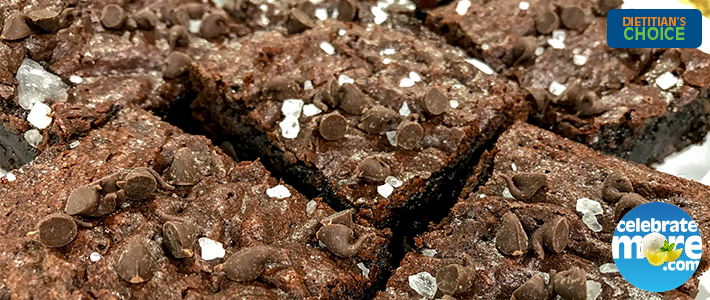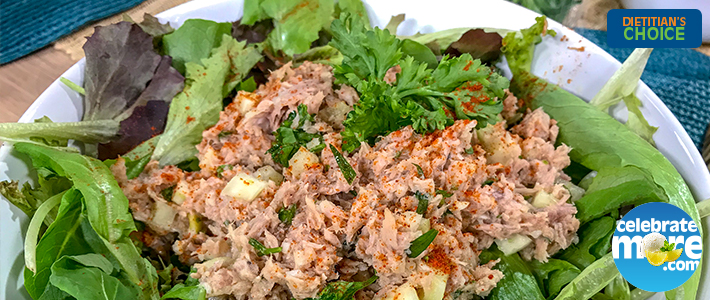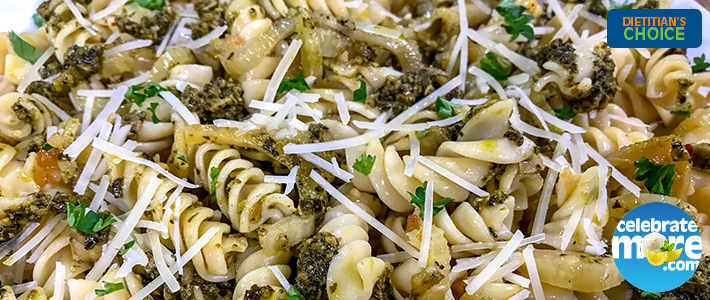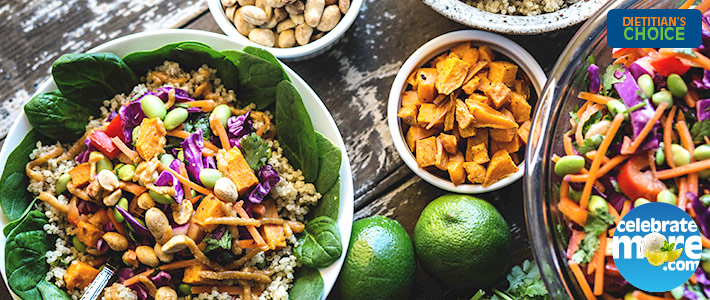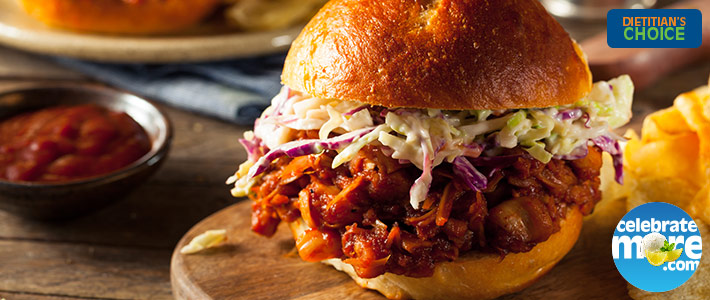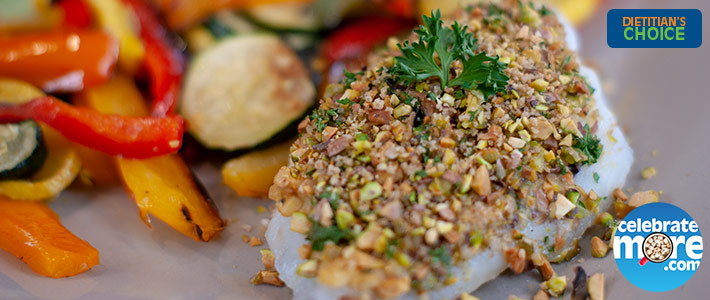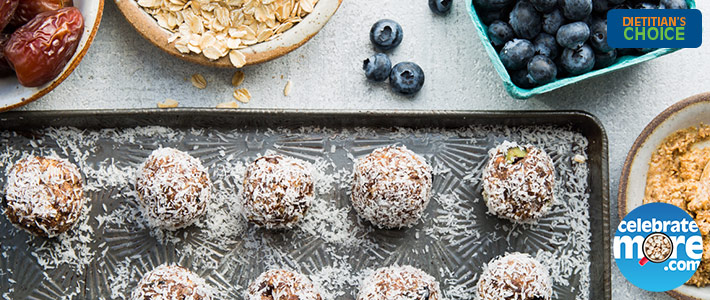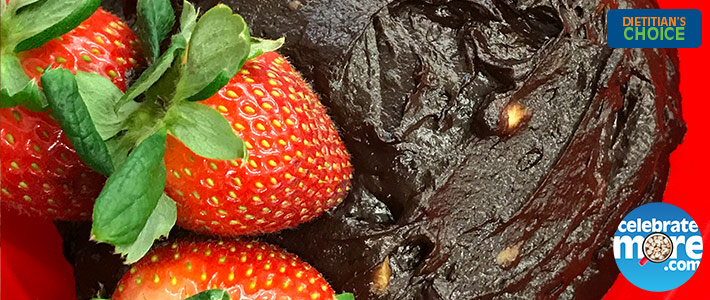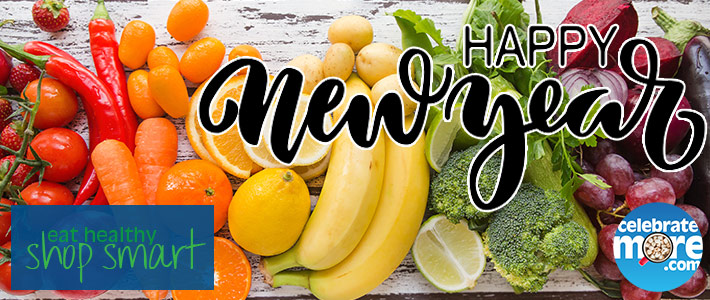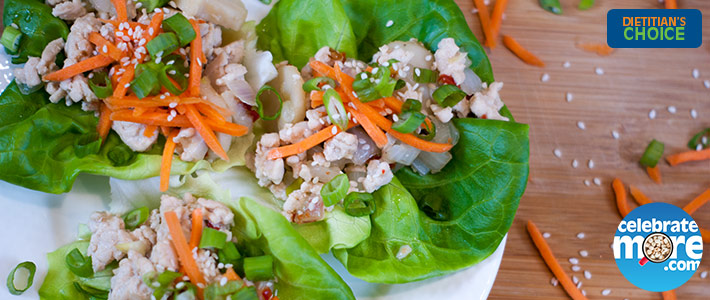Tags: Dietitian’s Choice
Mediterranean Fennel Salad
Fennel Pasta with Kale Pesto
Pantry Challenge
Spring Cleaning Your Pantry!
 The weather is warming up and if you’re like me, you’ve got the windows open and you’ve already started doing some spring cleaning! Of course, it’s great to tackle all the grime and dust that builds up in places around your home, but there’s one area that most people tend to forget about in their cleaning frenzy… the pantry!
The weather is warming up and if you’re like me, you’ve got the windows open and you’ve already started doing some spring cleaning! Of course, it’s great to tackle all the grime and dust that builds up in places around your home, but there’s one area that most people tend to forget about in their cleaning frenzy… the pantry!
Are you up for the challenge? Then join our Spring Cleaning #PantryChallenge! It’s the perfect time to clear out your expired food items and re-organize your food storage space to be more functional for the whole family. I’ve established a How-To-Guide on cleaning your pantry, fridge and freezer! It’s easy to follow and you can do it on your own time.
#PantryChallenge Goals:
- Get rid of expired food in your pantry, freezer and refrigerator.
- Guide your meal planning to utilize items you have on hand.
- Give you inspiration to make better choices for you and your family!
Let’s Get Started
Pick your zone! Start in the pantry, fridge or freezer. Where you start doesn’t matter, as long as you take the first step. Just know you will repeat these steps with each space.
Step 1: Take EVERYTHING out
I mean it… EVERYTHING! If you keep any small appliances or other non-food supplies in your pantry, clear them all out. This will help you start fresh and keep things organized where they need to be. Plus, it’s a good chance to dust off the ones you haven’t used in a while or consider donating items you haven’t used in a REALLY long while!
Step 2: Toss all expired food
I can pretty much guarantee that you’ll have some items in your house from 2017 or before. (I’m guilty, too). Toss them out and keep only the items that you and your family will eat. For non-perishable items that are not expired and you don’t see your family utilizing, donate them to your local food shelf.
Step 3: Write it down
Write down all food items that you are keeping. Find a blank notebook, scratch paper or an app in your phone… whatever works for you! Make 3 columns – Pantry, Freezer & Refrigerator. Write down all the items that you still have on hand, make sure to exclude all the items that were outdated and donated.
Step 4: Scrub-a-dub-dub!
Clean & wipe down the space. Now that everything is out, give it some good old-fashioned elbow grease and get cleaning! Get in those corners and be sure that your food is being stored in a clean place. This would be a good opportunity to add or replace shelf paper in the pantry or add a coat of paint to brighten up the space too!
Step 5: Re-stock
Put all your items back in. Keep them organized as you go by putting like items together. This is a good time to add new shelves or bins to help keep your food organized. Double check the food as you return it to the space to see if the cans or boxes may be dusty too. Wipe them down if needed so they don’t dirty up your nice clean shelves.
Smarter Meal Planning
Take the list that has all the food items you have in your pantry, fridge, and freezer. Are you overwhelmed? It’s amazing how much food we have on hand, yet, we can still come home and think “We have no food in this house!” (I’m guilty, too!)
The last step to our #PantryChallenge is my favorite part! I challenge you to use the list of food that you have on hand and create as many meals out of it as you can! For example, if you know you have pasta and lean ground beef, perhaps you make spaghetti and meatballs one night. Or if you have a variety of canned beans, maybe you try out some chili.
The goal is to plan meals that utilize the food you have on hand to help you use up the food that’s been sitting in the cupboard for quite a while. So, get creative with your meals or find some new recipes! (We have lots of great Dietitian’s Choice recipes right here on CelebrateMore!) By planning ahead, it’s easier to plan healthier, more balanced meals for the whole family. Plus, your shopping list should be much shorter if you’re utilizing what you already have at home, saving you time and money at the grocery store!
Share your photos with us!
Take a before and after photo… You’ll be glad you did! We would love to see the progress and improvements you made in your home with the #PantryChallenge! So, show off a little on how you are reducing food waste and stretching your food dollar. Share your photos on Instagram and tag us @Coborns_Stores. We would love to know what other tips you might have when it comes to spring cleaning your pantry!
Cheers to spring!!
Amy, RD, LD
Cauliflower Steaks With Coconut Turmeric Relish
Plant Based Eating – Staying On Trend
 Staying on Trend with Plant Based Eating
Staying on Trend with Plant Based Eating
Plant based foods are trending in the world of health and nutrition, and for good reason! By aiming to incorporate more plant-based foods in your meals and snacks, you’ll increase your serving of fruits and vegetables, vary your protein sources and boost your fiber intake. All can aid in digestive health, weight management, and overall health.
Choosing more plant-based foods doesn’t mean throwing out all your meat and poultry options. It simply means adding more variety to your food choices to jazz up your meals and snacks! You’re likely eating some plant-based foods as part of your daily routine already. Fruit, vegetables, whole grains, and beans are all examples. With spring upon us, it’s a great time to be thinking about potentially having a vegetable garden or having some tomatoes or green peppers in potted plants on your deck. It’s an easy and inexpensive way to have more produce on hand.
Digestive Health
As a registered dietitian, I want to be clear that eating meat and poultry is not bad and can still provide great nutrition! However, sometimes we are repetitive with our shopping list and food choices. (I’m guilty of this as well!) There are so many plant-based foods that can help us achieve our protein and fiber needs throughout the day. For example, beans, quinoa, brown rice and lentils all provide protein and fiber!
Inside our guts we have a microbiome that is made up of mostly bacteria (don’t fret – we need these bacteria!!) Our gut plays a huge role in our overall health and you’ll feel much better if your microbiome is well balanced! We can help balance our microbiome by having good nutrition and feeding it pre and pro biotics.
Prebiotics and Probiotics
People often think of these two as the same, but they are in fact very different! Prebiotics act as food for the current bacteria that’s in our gut and helps it to grow. On the other hand, probiotics are the new bacteria that we add to our current microbiome. They are both essential for a healthy gut!
Prebiotics can be found in many of the foods that we consume (or should consume) daily. That’s why there is more of an emphasis on probiotics in the media. Foods that have prebiotics include fruits, vegetables and other complex carbs including fiber. So, plant based foods can offer great benefits towards our gut health!
Probiotics contain live organisms, which is good! Yogurt is a perfect example of a common food that contains probiotics. Now if you look on the shelf at the store, you’ll see other items such as kombucha and sauerkraut that have probiotics. Then again, you can find supplement forms of both pre and probiotics. Food is the best source for pre and probiotics, as they offer so many other nutrients beneficial to our health.
Find what works for a healthier YOU!
As always, our goal as Registered Dietitians is to help you feel your best! We’d challenge you to tie in more plant-based foods into your day-to-day life and see how you can boost your intake of fruits and vegetables as well as provide protein, fiber, pre and pro biotics into your routine. If you have any questions, please reach out to us through our Dietitian’s Corner page!
Check out these plant-based recipes!
- BBQ Jackfruit Sandwich with Avocado Slaw
- Quinoa Salad with Apples, Baby Spinach and Chick Peas
- Lentil Soup
- The BLEND Classic California Burger! *This is for those who have good intentions of eating a plant- based burger, but still need their beef! It’s a perfect blend of mushrooms and beef to add great flavor to a juicy burger!
Amy, RD, LD
Mayo Clinic. (2018, March 06). Prebiotics, probiotics and your health. Retrieved from https://www.mayoclinic.org/prebiotics-probiotics-and-your-health/art-20390058
BBQ Jackfruit Sandwich with Avocado Slaw
Pistachio-Crusted Cod
Our Family Table – Sharing Our Kenyan Culture Through Food
Hey Everyone! In case you didn’t know March is National Nutrition Month – basically every dietitian’s favorite month of the year! It is definitely worth celebrating all month long! And what is this dietitian’s favorite way to celebrate? By enjoying amazing food, of course!
Presently we are in a culture where overeating is prevalent and mindful intuitive eating is becoming mainstream. We need to strike a balance between genuinely enjoying the eating experience, nourishing our bodies with what it needs to function at its highest capacity, and yet allowing ourselves to indulge in all foods in moderation, proper portion and balance. It’s really about listening to our bodies and being mindful and intuitive throughout the whole eating experience. Quite the harmonizing act, but all in the name of appreciating our food and allowing it to sustain our bodies so we can feel our personal best!
Food is a big part of every culture and every person, everywhere on planet earth. It truly has the power to connect and is inclusive of everyone. Food has the power to bring us to the table for conversation, relationship building and enjoyment of the food experience which includes both eating and preparation. Throughout my travels around the world that is the biggest theme.
Many of you know that my husband is from Kenya and we make it a point to travel there as often as possible so that our boys can know their family and know Kenya in a very personal and genuine way, especially in terms of the food experience. I wanted to take time to share the meaning of food and the eating experience in Kenya – the symbolism of food is incredible, and every culture and society holds their own beliefs.
In traditional Kenyan fare, there is ALWAYS sautéed greens, its not a meal without them. In fact, the most common green is called Skuma Wiki – think of it like kale or collard greens. The meaning behind it in Kiswahili – one of the main languages is, “to get through the week.” Families that are unable to afford other foods rely on this very common and low-cost green to satisfy them through the week when other foods are unavailable due to cost.
 Ugali – Many Kenyans, especially the men don’t believe they can be truly satisfied or full without this staple. It is a corn-based flour that is cooked and formed into a dense cake. This is basically the mashed potatoes of Kenya!
Ugali – Many Kenyans, especially the men don’t believe they can be truly satisfied or full without this staple. It is a corn-based flour that is cooked and formed into a dense cake. This is basically the mashed potatoes of Kenya!
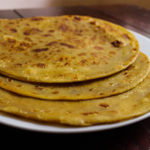 Chapati – this is like a homemade flour tortilla. It’s my ABSOLUTE favorite food in Kenya. My son LOVES them, and he begs Grandma Kenya (as we call her) to make them literally every day when he is with her. There is so much time and effort including very special skills put in to make the perfect chapati. It is served to visitors, especially after a long safari (journey) to symbolize appreciation of the visitor and a very sincere welcome to the guest.
Chapati – this is like a homemade flour tortilla. It’s my ABSOLUTE favorite food in Kenya. My son LOVES them, and he begs Grandma Kenya (as we call her) to make them literally every day when he is with her. There is so much time and effort including very special skills put in to make the perfect chapati. It is served to visitors, especially after a long safari (journey) to symbolize appreciation of the visitor and a very sincere welcome to the guest.
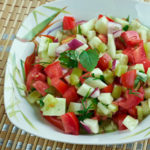 Kachumbari – This is like a side salad but think of it as a fresh salsa. It has diced tomatoes, chopped onions, cilantro, a squeeze of lemon and sometimes fresh avocados.
Kachumbari – This is like a side salad but think of it as a fresh salsa. It has diced tomatoes, chopped onions, cilantro, a squeeze of lemon and sometimes fresh avocados.
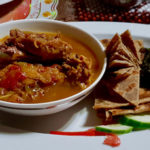 Meat – Meat is expensive in Kenya. The most common meats served are beef and goat. The meat is either roasted on the grill (choma) or put into a stew to dip the ugali and chapati. Meat is really a status symbol of wealth in Kenya. It is very common for a well-to-do Kenyan to slaughter a whole goat or even a whole cow depending on the number of guests, as a welcome and symbol of genuine appreciation for the guests visiting. Someone who is less financially fortunate will provide the best that they have, even if it means the family will suffer for the week leading up to the visit and the week after hosting a guest. If a chicken is available, the host will even slaughter their last chicken and prepare it for the guest.
Meat – Meat is expensive in Kenya. The most common meats served are beef and goat. The meat is either roasted on the grill (choma) or put into a stew to dip the ugali and chapati. Meat is really a status symbol of wealth in Kenya. It is very common for a well-to-do Kenyan to slaughter a whole goat or even a whole cow depending on the number of guests, as a welcome and symbol of genuine appreciation for the guests visiting. Someone who is less financially fortunate will provide the best that they have, even if it means the family will suffer for the week leading up to the visit and the week after hosting a guest. If a chicken is available, the host will even slaughter their last chicken and prepare it for the guest.
If you haven’t noticed, the guest is truly the most important person in the Kenyan culture and Kenyans hold them to the highest regard, truly rolling out the red carpet to their greatest capacity to make their guest feel most welcome and most comfortable. This is all accomplished through the food offered and the event of the meal shared at the table.
This is only the beginning of the food symbolism in the Kenyan culture. Where are your roots and family heritage/ancestry? We would love to hear! What are the most important foods in your culture and what are their meanings?
“Food is our common ground and our universal experience” – James Beard
“The power of food is very spiritual. It not only brings the whole family on the same table, but also brings the whole world together” – Vikas Khanna
Peace and Wellness,
Ashley, RD, LD
Blueberry Power Superfood Bites
Creamy Mushroom Wild Rice Soup
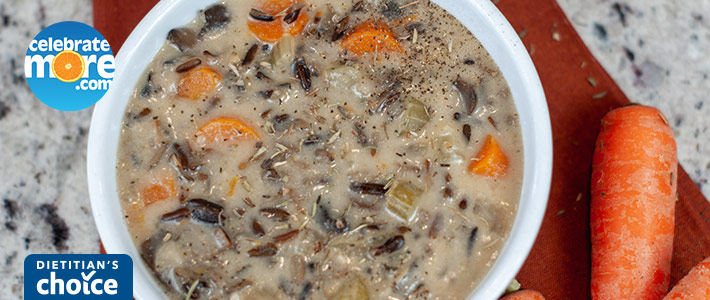
Creamy Mushroom Wild Rice Soup
Pressure cooker recipes like this Creamy Mushroom Wild Rice Soup are super easy, convenient, and delicious on chilly fall days! Our dietitians are adding new recipes all the time, so check out our Dietitians Choice Recipes page for all their latest recipes!
Shop from the comfort of your home! You can shop online at any of our proud family of stores for these recipe ingredients as well as the rest of your grocery list! We offer curbside pick up at all locations and delivery in select locations as well. Don’t forget to connect your MORE Rewards account when you shop online for extra savings, digital coupons, and many other rewards too!
Shop Ingredients
Chocovado Dip
Understanding Intermittent Fasting
Intermittent Fasting
For a dietitian (and soon-to-be dietitians) it’s important to stay up to date with nutrition trends to be able to answer client’s questions. It can be quite the race trying to keep up with the latest diet fads. Seems like every week there’s a new strategy for eating, and it feels like you’re running a marathon at the pace of a 50m sprint. You finally figure out one diet, then another pops up and you’re back to the beginning – pretty soon you’re out of breath and need a snack. Maybe a nap, too.
Navigating the pros and cons and separating fact from fiction on the Internet can be difficult. Unfortunately, even articles that provide scientific references many times cherry pick information from research to fit their articles. This makes it that much harder to know what to believe. Lucky for you, dietetics is an evidence-based profession, and we are taught how to read and interpret scientific literature so you don’t have to!
So, let’s get to the scientific facts you need to know about intermittent fasting.
What is it?
Intermittent fasting is the practice of abstaining from food or drink for an extended period of time, whether it be overnight, during the day, or a number of days. It’s a pretty straightforward concept. Essentially, you have a period of time daily or weekly in which you do not consume any caloric intake (water is still allowed during fasting periods). There are different methods to this, so there are different variations of this style of dieting. Fasting has been a religious practice for thousands of years, but as of recently has caught media attention as a diet style for weight loss.
Intermittent fasting has a wonderful eat whatever the heck you want policy, as long as you don’t eat during your fasting period. This freedom to choose the foods you like is enticing, I totally get it.
There are different types of fasting strategies:
- Based on time – your fasting period is an extended period of time daily, most likely just an extended nightly fast that we all do while we sleep. Just think of it as once you wake up you don’t eat until lunch time.
- Based on days – your fasting period is a whole day, and you alternate days in which you fast.
- Based on calories – this type allows you to eat every day, but you have a severe caloric restriction on specific days with no calorie restriction on the others.
These are examples of a few, but there are definitely other variations.
What does Science say?
Science has mixed thoughts and, as with many fad diet trends, a serious lack of long-term trials to fully assess if intermittent fasting is beneficial. As of right now, in healthy persons, there’s no harm physically or mentally to intermittent fasting, and some studies have shown some weight loss in these groups. However, there has been no conclusive evidence showing intermittent fasting provides a superior amount of weight loss when compared to typical calorie restriction1. There is limited research as well on this diet and whether it can help with prevention of chronic diseases like heart disease and diabetes2. Also, much of the research available to dictate how fasting affects metabolism is done in mice or rats. While the research from these studies shows some promise, it is only a starting point and we cannot base conclusions off animal studies.
Reducing calories is the main driver behind intermittent fasting and how it allows some people to lose weight. Cutting out a meal a day allows some folks to reduce that many more calories. Hello weight loss! The science is inconclusive on how fasting impacts our hunger cues, so it might either make you ravenous or not change your hunger at all. But, if increased hunger happens and you eat more at your other meals, your calorie deficit is gone.
All in all…
We would not recommend intermittent fasting based on the fact that we just don’t know how intermittent fasting truly works on the body. There is no scientific research to support the theory that it’s more beneficial than traditional calorie restriction and there’s just not enough historical research to know how it affects us long term. Maybe when we have more definitive human research we can consider this as a more viable option, but for now, eating a balanced diet and reducing calories is the approach we recommend for weight loss! And of course, include physical activity for a well balanced lifestyle.
Wishing you a happy & healthy new year,
Kayla Wenner
This article was written by Kayla Wenner, Dietetics Student from the University of Minnesota, Twin Cities. This article was reviewed and approved by the team of Coborn’s Registered Dietitians.
References:
- Patterson RE, Sears DD. Metabolic Effects of Intermittent Fasting. Annu Rev Nutr. 2017; 37: 371-393.
- Barnosky AR, Hoddy KK, Unterman TG, Varady KA. Intermittent fasting vs daily calorie restriction for type 2 diabetes prevention: a review of human findings. Transl Res. Oct 2014; 164(4): 302-311.
- Ganesan K, Habboush Y, Sultan S. Intermittent Fasting: The Choice for a Healthier Lifestyle. Cureus. July 2018; 10(7): e2947.
Happy & Healthy in the New Year
Getting a Happy and Healthy Start to the New Year
 We may have just found the key to happiness—a daily dose of fruits and veggies. We are all well-aware that fruit and veggie consumption has been linked to various health benefits such as lowered risk for heart disease, cancer, and high blood pressure, but did you know that science has found that people who eat more fruits and veggies are actually happier, have increased life satisfaction, and better mental well-being?1
We may have just found the key to happiness—a daily dose of fruits and veggies. We are all well-aware that fruit and veggie consumption has been linked to various health benefits such as lowered risk for heart disease, cancer, and high blood pressure, but did you know that science has found that people who eat more fruits and veggies are actually happier, have increased life satisfaction, and better mental well-being?1
Researchers from the University of Warwick analyzed dietary habits of 80,000 British women and men.1 Over a 24-month period, it was found that extra servings of fruits and veggies led to increased happiness levels and that consumption of 7-8 servings per day led to the happiest people. Just how much happier are these individuals? According to the study, if an individual went from eating no produce to eating eight servings per day over the 24-month period, they experienced a 0.24 increase on average in their happiness score (scored 1-10). Although that may not sound like a large boost, the increase can be compared to the feeling of going from unemployed to employed.1
With just 1 in 10 adults meeting the recommendations for fruit and veggie consumption, researchers (and dietitians alike) hope this added benefit of fruit and veggie intake, increases people’s motivation to consume more.2
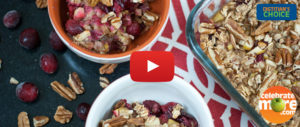 With health-related New Year’s Resolutions in full-gear, this is the perfect time to add more fruits and veggies to your diet. Look for creative ways to boost your consumption, such as adding seasonal produce to classic Midwest dishes. Try one of our team’s favorite easy breakfast recipes: Apple Cranberry Oatmeal Bake.
With health-related New Year’s Resolutions in full-gear, this is the perfect time to add more fruits and veggies to your diet. Look for creative ways to boost your consumption, such as adding seasonal produce to classic Midwest dishes. Try one of our team’s favorite easy breakfast recipes: Apple Cranberry Oatmeal Bake.
Looking for more ways to boost your fruit and veggie intake for you and your family? Check out these kid-friendly recipes
or head on over to our Dietitian’s Corner for all of our latest recipes, articles and resources!
Happy and Healthy Eating,
Emily, RD, LD
1News & Events. Retrieved December 29, 2017, from https://warwick.ac.uk/newsandevents/pressreleases/7-a-day_for_happiness/
2CDC Newsroom. (2017, November 16). Retrieved December 29, 2017, from https://www.cdc.gov/media/releases/2017/p1116-fruit-vegetable-consumption.html
Sweet Thai Chili Lettuce Wraps
More Videos
Page
©
2025 Coborn's Inc. and Vimax Media unless otherwise noted. All rights reserved.




